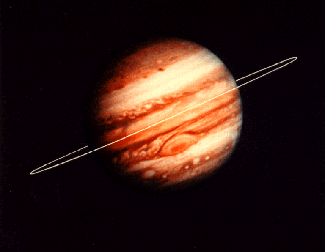 |
| NASA: InOMN logo, duh. |
Gasp! We saw Jupiter and it's four moons. Like in real life, in the lens of a telescope. It was truly one of the most amazing things I've ever seen. I'll definitely be looking for it every night for as long as it'll remain visible. Ooh, I can't wait to see Saturn. You'll hear my excited scream when I finally set eyes on those rings, wherever in in the world you are.
We attended the 2011 NASA Goddard's National Observe the Moon Night with some friends and thoroughly enjoyed every minute. We took turns looking at the Moon up-close through a telescope, which was kind of the goal of the night- until we set eyes on Jupiter through one volunteer's rogue telescope and it completely stole the Moon's thunder (ahem).
 |
| NASA: Jupiter's Rings |
 |
| NASA: Jupiter's Rings |
There were so many activities the kids could participate in that added to the excitement of going out way after dark instead of to bed. They had crafts like Impact Painting (simulating with paint the objects that have impacted the moon to give it its prickly appearance), re-creating the phases of the moon with Oreo cookies, but best of all (at least for the kids) was making a slide out of the supports that held up the gi-normous rocket in Goddard's back yard under the cover of darkness- well, excluding the full moon's light, that is.
Inside, their Visitor's Center is a tremendous resource, open every day and free to the public, complete with an interactive touch-screen table for creating and learning about Space Station Modules. The lobby of the Center has lots of educational materials for the taking and upstairs there's an incredible Teaching Resources office, where they offer exactly that. We scored some cool educational posters & booklets for homeschooling and it was absolutely free. There's a limit to how many you can pick up at one time, so be forewarned you'll have a tough time choosing since their selection is pretty broad, but do your best.
Their website www.nasa.gov has full-color photos, up-to-date info at what's going on at NASA, and pretty much anything you want to know about space exploration.
Follow @NASA on Twitter for relevant tweets on science, space news & events.
No comments:
Post a Comment
Do you have a comment, question or suggestion to share?